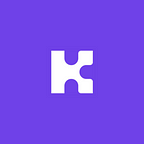Kin Economy Report: September 2020
Monthly Updates on Key Economic Metrics
Net Dollars Bought (NDB)
Net Dollars Bought is defined as Kin purchased (directly or indirectly via alternative methods such as ads) for goods and services by users within the ecosystem, less all Kin paid by the Kin Foundation through the KRE and Kin Grants.
Below is the NDB graph as of September 6. This graph can be challenging to evaluate because it is a line going down and to the right. The objective of the Kin Foundation through its allocation of the Kin Reserves is to allocate Kin to higher and higher ROI behaviour, which, in this graph would mean flattening the line and eventually reversing its trajectory to reach a number above 0. But that will take time — this is measuring real demand within the economy relative to the issuance of Kin, ignoring all speculative demand. What is important to note in the recent trend is the slope of the line. The last month has been one of the flattest stretches since the Kin Rewards Engine started making payouts. While it is still down and to the right, this is positive progress towards economic sustainability. This shows that the recent changes in the KRE have been effective in driving positive Net Dollars Bought.
Bought / Issued Ratio (B/I Ratio)
The B/I Ratio describes how much Kin is bought for goods and services per Kin issued by the Kin Foundation (all time).
As of September 1, the B/I Ratio was sitting at 0.0044. This is a 530% increase from August 1. This increase is driven by the growth of Kin Bought combined with the recalibrated incentives of the KRE to further incentivize the Buy Track and reduce the allocation to the Spend Track.
The total Kin Bought in the ecosystem over the month of August was 1,362,084,260.35 which is a 650% increase over the total Kin Bought in the month of July.
The total Kin Issued to developers over the month of August was 32,009,597,774.12 which is an 18.2% decrease of the total Kin Issued in the month of July.
This shows an increasing effectiveness of each incremental Kin distributed in driving Net Dollars Bought.
Kin Spent Per Day
The amount of Kin spent on goods and services per day is effectively the Kin Economy’s GDP.
With the KRE indexing higher to the Buy Track, there is now a lower incentive for driving the number of unique spenders through the Spend Track. Given that, there has been some attrition in the number of people spending, and in the near term that is reflected in the total amount of Kin Spent plateauing. This is expected during this period of change. As you can see in the graph, there was a sharp correction but the trend is climbing back. Part of this is driven by higher value spends per active user — a key metric in driving higher demand for Kin. It is expected that the amount of Kin spent per user will increase as developers adjust to the Buy Track and work to drive more spending per user, which in turn drives higher demand and more buying behavior. We are seeing early signs of that in the data right now.
Conclusion
KRE v2.2 was implemented on August 1. This latest version increased the weighting of payouts further to the Buy Track and away from the Spend Track. The Ecosystem has responded with a 650% increase in Kin Bought. The resultant impact on the Spend Track was a 10.5% decrease of MAS from from September 1 / August 1. This is expected given the recalibration of incentives. Going forward there may continue to be some attrition to MAS but it is expected to plateau and start climbing to positive growth again as apps adjust to the new incentives.
The recent climb in Kin Spent Per Day is a leading indicator of increased user engagement. The combination of the drop in MAS and the increase in Kin Bought and Kin Spent would suggest that while total users have seen a decline, the total value is increasing, which can be extrapolated to higher value generated per user.
It should be anticipated that during periods immediately following material changes to the KRE there will be a period of adjustment for developers. To anticipate this, the Kin Foundation is providing advanced lead time for developers to prepare — while the KRE 2.2 was implemented on August 1 it was first proposed in May of this year.
The economic markers in the Kin Economy look strong with increased maturity of real demand coming from ad sponsored earning. So far 8 of the top 10 apps in the ecosystem have implemented ad sponsored earning meaning more and more users in the Kin Ecosystem are now generating real demand with their time and attention.
